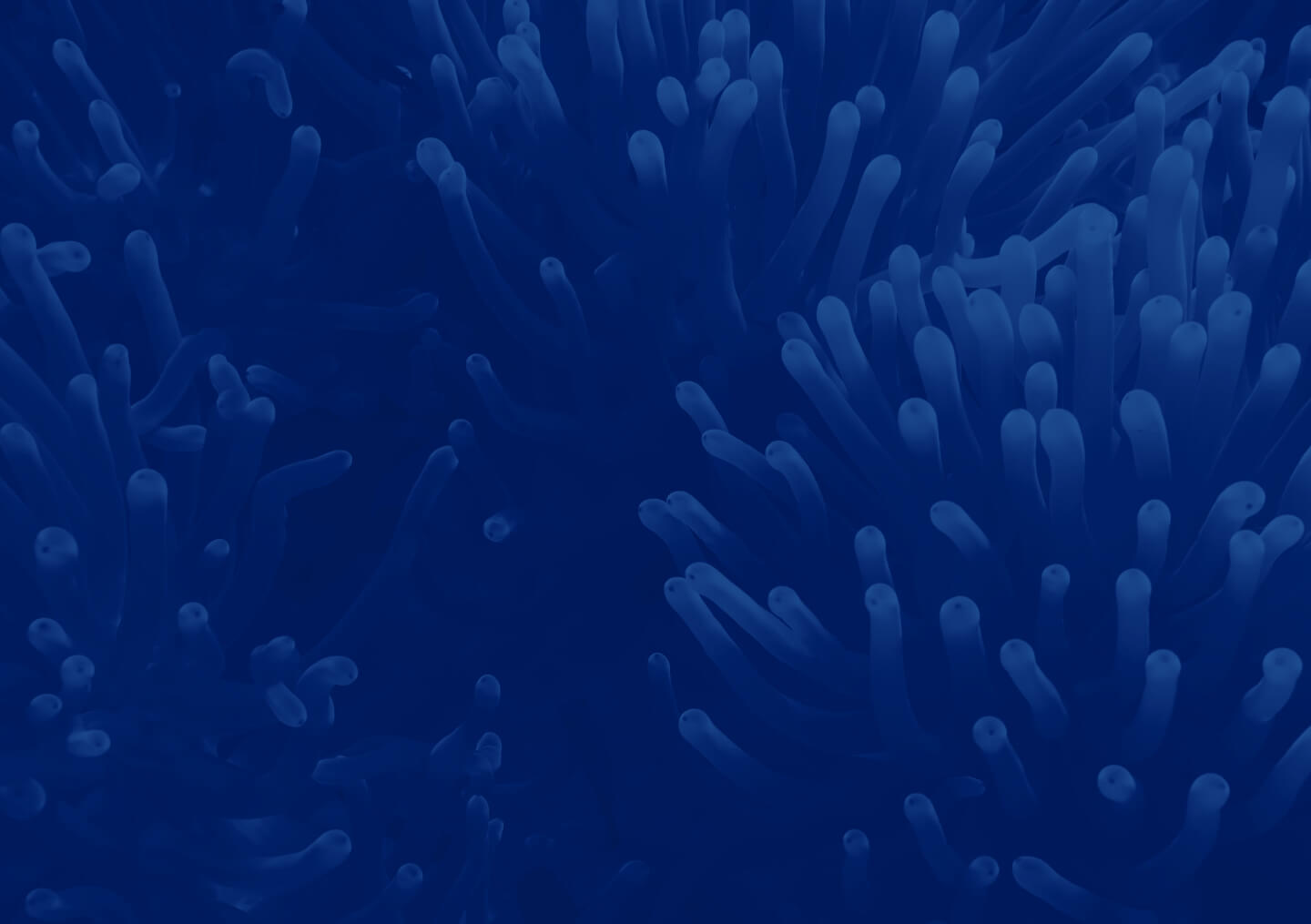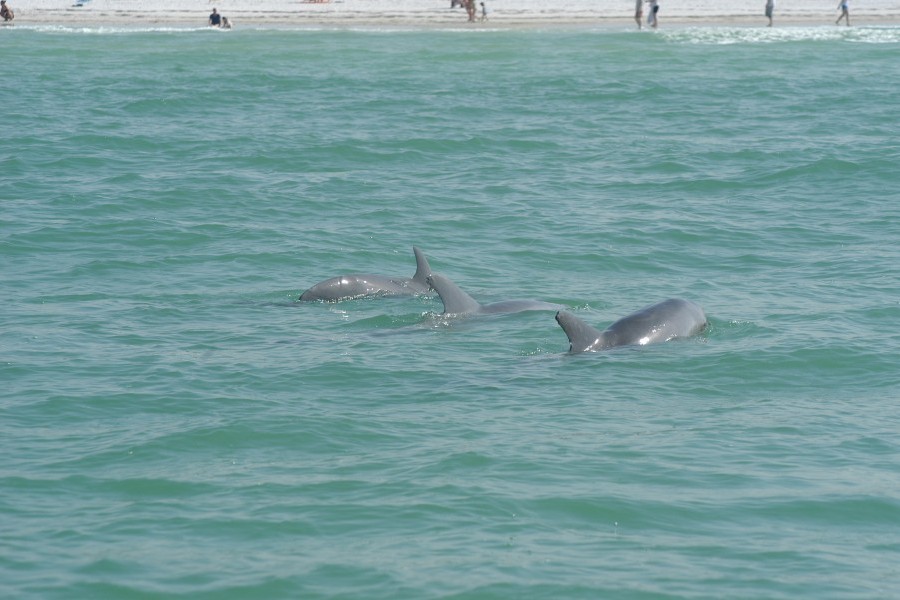One of the oldest dolphins in Sarasota Bay died on June 7 after ingesting fishing gear. This loss serves as a reminder to protect marine life while enjoying our coastal waters and beaches on July 4 and year ’round. (Tips below)
The 58-year-old female dolphin Squiggy was recovered dead and examined by staff from the Florida Fish and Wildlife Conservation Commission. Squiggy was emaciated and she had three large fishing hooks in her stomach and one in her mouth that was attached to 11 feet of heavy monofilament line, along with healed scars from previous entanglements. She was known to spend time near Venice, including areas with frequent boat traffic.
Squiggy was first identified in September 1980 and was documented 267 times since then by the Sarasota Dolphin Research Program (SDRP) – a collaboration between Mote Marine Lab and Chicago Zoological Society. SDRP staff have continued monitoring Squiggy’s descendants, who have also suffered human interactions. Squiggy’s daughter died in 2012 from ingesting recreational fishing gear, and the daughter’s six-month-old calf died several weeks later from losing her mom. Squiggy’s first grand-calf died from entanglement in a crab trap’s float line.
Currently, the dolphins of Sarasota Bay are at the height of calving season. Five babies have been born this year and one was lost for unknown reasons. During this time of year, it’s more important than ever to be vigilant for dolphins.
Manatees are also on the move for reproduction and foraging, and sea turtles are swimming just offshore to mate and coming ashore to nest.
All marine mammals and sea turtles are protected by federal law, and all the species living along southwest Florida face significant risks from human interactions.
According to Mote’s Stranding Investigations Program — a 24-hour response service for marine mammal and sea turtles in Sarasota and Manatee counties — about 25-30 percent of all animals rescued or recovered by Program staff were affected by human interactions such as boat strikes and fishing gear. Typically, dolphins are more likely to be harmed by fishing gear and sea turtles are more likely to be struck by boats.
Tips for Protecting Marine Life
Boaters:
- Follow Coast Guard-approved safe boating guidelines and use vigilance to avoid striking marine animals.
- Wear polarized sunglasses to see marine life in your path.
- Follow posted signs for slow-speed zones.
- Follow 10 dolphin-friendly fishing and viewing tips. Click here for a PDF. (These tips were made with dolphins in mind, but they’re also great guidelines for the best ways to view all large marine animals.)
- Never feed marine wildlife. Click here to watch a PSA about why it’s harmful and illegal to feed wild dolphins: www.dontfeedwilddolphins.org.
- Stow trash and line when under way. Marine debris that accidentally blows overboard or out of a truck can become ingested by or entangled around marine life.
- If you observe a manatee mating herd – several manatees gathered as males vie to mate with a female – watch the manatees from at least 100 feet away. Coming any closer might disrupt the animals’ natural mating behavior or put people into harm’s way. Adult manatees typically weigh upwards of 1,000 pounds and people can be seriously injured.
Beachgoers:
Sea turtle nesting season takes place from May 1-Oct. 31 on Southwest Florida beaches. Each day of the season, Mote scientists and volunteers patrol 35 miles of Sarasota County beaches, from Longboat Key through Venice, to document sea turtle nesting.
On the nesting beaches, light from waterfront properties can disorient nesting female turtles and their young, which emerge at night and use dim natural light to find the sea. Also, beach furniture, trash and other obstacles can impede sea turtles and their young.
Here are some “do and don’t” tips to keep our beaches turtle-friendly:
- DO stay away from sea turtle nests marked with yellow stakes and tape, and seabird nesting zones that are bounded by ropes.
- DO remain quiet and observe from a distance if you encounter a nesting sea turtle or hatchlings.
- DO shield or turn off outdoor lights that are visible on the beach from May through October.
- DO close drapes after dark and stack beach furniture at the dune line or, ideally, remove it from the beach
- DO fill in holes that may entrap hatchlings on their way to the water.
- DON’T approach nesting turtles or hatchlings, make noise, or shine lights at turtles.
- DON’T use flashlights, head lamps or fishing lamps on the beach.
- DON’T encourage a turtle to move while nesting or pick up hatchlings that have emerged and are heading for the water.
- DON’T use fireworks on the beach.
- DON’T walk dogs on any Sarasota County beach other than Brohard Paw Park in Venice. There, dogs must be leashed or under voice control, according to county ordinances.
How to Report Marine Life in Distress
Mote’s Stranding Investigations Program responds 24 hours a day, seven days a week to reports of sick, injured and dead marine mammals and sea turtles for animals in Sarasota and Manatee county waters. Live animals are brought to Mote’s Dolphin and Whale Hospital or Sea Turtle Rehabilitation Hospital and deceased animals undergo a detailed post-mortem examination to help reveal the natural history of these animals and evaluate long-term trends in mortality.
Within Sarasota or Manatee county waters, if you see a stranded or dead dolphin, whale or sea turtle, please call Mote’s Stranding Investigations Program at 888-345-2335.
If you see a stranded or dead manatee anywhere in state waters or a stranded or dead dolphin, whale or sea turtle outside of Sarasota or Manatee counties, please call the Florida Fish and Wildlife Conservation Commission’s Wildlife Alert hotline at 1 (888) 404-FWCC (3922).
The public can also report stranded marine mammals in the Southeastern U.S. using the smartphone app Dolphin & Whale 911.


